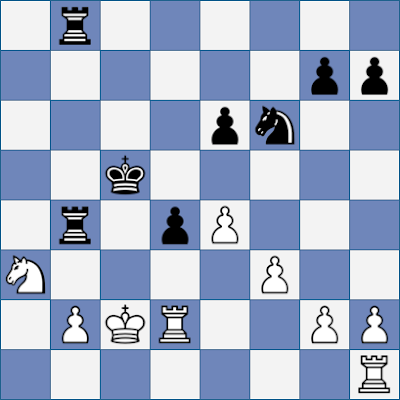BtM 9A: Beat the Kasparov Stratos
August 1988, Position A
White to play
Chiburdanidze - Watson, Brussels 1987
Contributions are welcome in the comments box. I’ll reply with what the Masters have to say about their choice to anybody who suggests a move.
Scroll down to see some commentary from me and the Masters’ feedback.
.
.
.
.
.
.
.
.
.
.
.
.
.
.
.
.
.
.
.
.
It turns out I’m not the only one who has happy memories of Beat the Masters. When I mentioned that I’d started The Abysmal Depths of Chess on the EC FORUM Ben Graff remembered that in many months they would have a computer as a guest panelist. On one occasion it was the Kasparov Stratos which Ben happened to own at the time.
According to CHESS, the Stratos had an estimated rating of 2025 elo at the time. Not the very strongest commercially available machine back then, but not so far away from it.
It was the 4th edition of the competition, published in the August 1988 copy of CHESS. The Stratos struggled a bit, as you might imagine, scoring 51/90 all told. Compare that with Flear, Paul Littlewood, Howell and Botterill who all scored 87/90 (97%) and the lowest-scoring panelists Norwood and Martin who got 65 (72%) and 58 (64%) respectively. As it happens, your humble scribe notched 69/90 (77%). That is my second-best total for a set of Beat the Masters positions to date.
This was an unusual set of positions for BtM in that there was a very high proportion of puzzles in which panelist opinion coalesced around one move. In two positions - one of which we saw a few weeks in Beat the Masters 2 - the Masters were unanimous. In three others, 10 or 11 of the 13 panelists made the same choices.
It is noticeable that in these positions the Stratos tended to do well. It’s 78% score making a striking contrast with the 38% it got from the other 4 positions. That’s not too surprising, I suppose. The panel having a strong tendency to agree on one move implies a position with a concrete solution. This would have played to a computer’s strengths. Even in those days.
All in all, it was not a bad effort from Stratos in the circumstances. Today’s puzzle is a position that it found the 10-point move along with nearly all the Masters.
.
.
.
.
.
.
.
.
.
.
.
.
.
.
.
.
.
.
.
.
POINTS
10: Rc1
7: Kd3
3: Rb1, Kc1, Kb1
MASTERS
Rc1: Kosten, Plaskett, Davies, Flear, P. Littlewood, Norwood, Conquest, Levitt, K. Arkell, Howell, Botterill, S. Arkell, Kasparov Stratos.
Kb1: Martin
Kb1: Martin
SOURCE
1 Rc1, Chiburdanidze - Watson, Brussels 1987






Yesterday in the comments we had 1 Rc1 from Tom and and 1 Kd3 from Angus - both with the same idea of ... Rxd2 (+) losing material.
ReplyDeleteBoth good moves and if you set your engine on the position it will probably bounce between them with a negligible difference in evaluation - certainly small enough to make zero practical difference in the games of most of us.
Glenn Flear comments:-
"The tame 1 Kb1?! e5, 2 Rc1+ Kd6, 3 Nc4+ Ke6 leads nowhere although 3 Rdc2 is O.K when the position is unclear. After 1 Rc1! e5!, 2 Kd3+ Kd6, 3 Nc4+ Ke6, 4 Ra1! White successfully co-ordinates her pieces and takes over the a-file."
Flear, btw, was already a GM at the time this BtM was published. Most of the panel would go on to become GMs in the next few years.
Ah, on further inspection, 1. Kd3 is only good for a draw: 1 ... Rb3+ 2. Ke2 Re3+ and there is no good square for the king. After 3. Kf2 there is ... Nxe4+! and after both 3. Kf1 and 3. Kd1 (best) there is ... Rxa3!
DeleteAnd in the 1. Kb1 line Flear is unenthusiastic about 4. Na5 followed by Rdc2 and Rc6 is good says Stockfish 11.
I loved Beat the Masters series, have all back issues boxed away, sometimes get them out. Computers were a real interest as well. Over the years I test some dedicated computers and then pc programs as they got stronger. They started getting 95% right in a split second.
ReplyDeleteThanks for the memories.
I’m glad you’re enjoying it.
DeletePlaying strength of the computers seemed to move forward in great strides when the leading engines became software used on ordinary computers rather than standalone machines. Not sure why that should be. Greater computing power?